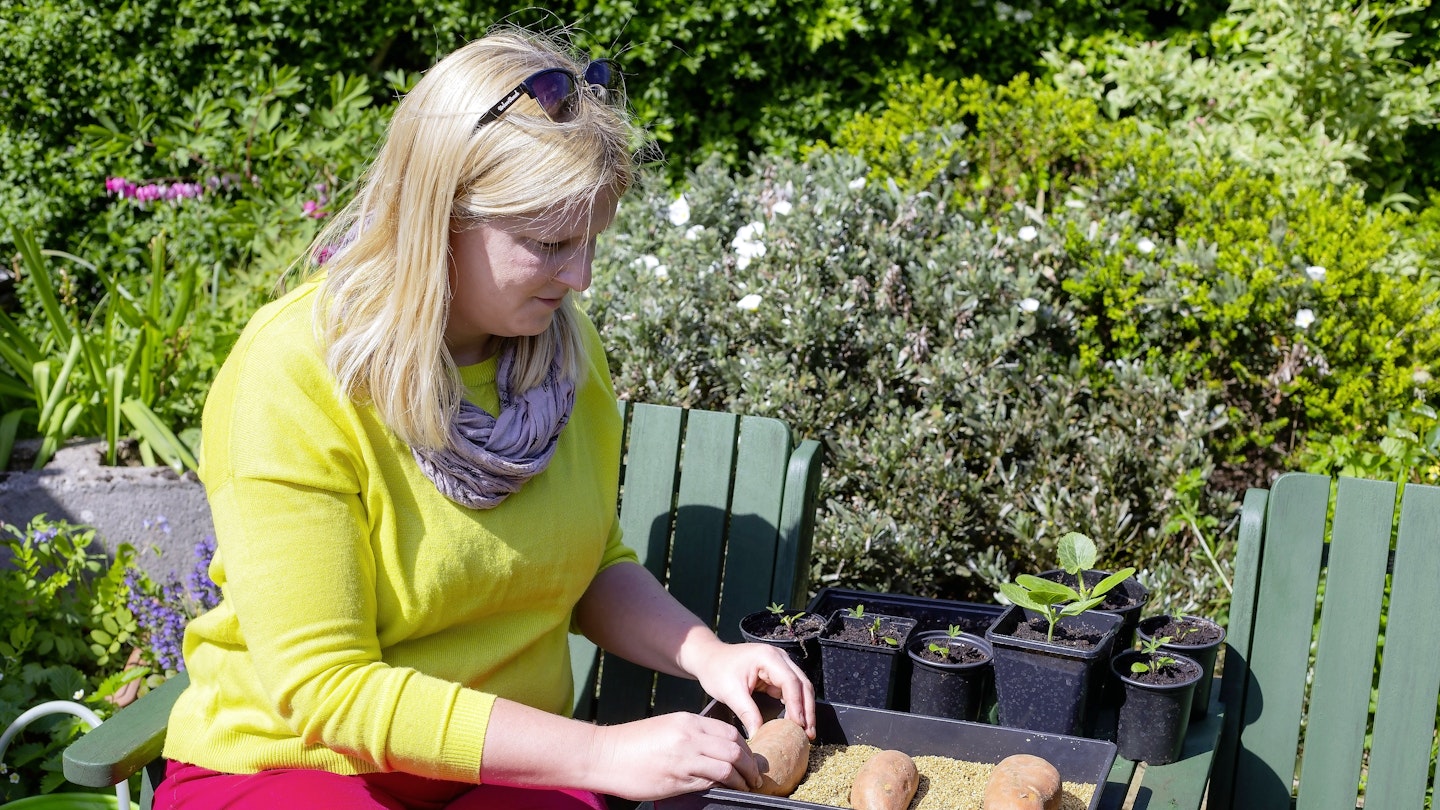Like everyday spuds, each sweet potato has the potential to sprout roots and stems, and grow into a whole new plant. The tubers you buy at the supermarket aren’t usually the hardiest varieties available, but you can still have a go at growing them in the greenhouse or even in your home as a houseplant. Their trailing stems and heart-shaped leaves make an attractive vine that you can drape over a sunny windowsill.
The tubers are often treated with a growth suppressant to stop them sprouting, so you’ll need to give them a good wash before you try this technique. There are two ways to start them into growth.
You can cover them in moist Vermiculite in a tray or suspend them in a jar of water to stimulate root growth. The tubers are normally pointed at both ends so there isn’t an obvious ‘up’ and ‘down’ end but you’ll find that if you dip one of the pointed ends into a jar of water, using toothpicks to suspend it in place if needed, roots will eventually grow into the water and leaf shoots will start to sprout from about midway up the body.
With either method, once shoots have appeared you can either plant the sweet potato whole or carefully cut it into sections known as ‘slips’ and grow them on as separate plants.
To do this, carefully cut off the sprouting stems where they meet the tuber and pot them up. Keep them warm and moist as you would a softwood cutting.
Sweet potatoes need a consistent daytime temperature of between 21C and 26C, which is why they perform best under glass.
For a good crop, each plant will need a large container, regular watering and a high potassium liquid feed every two weeks. Harvest when the foliage starts to go yellow but before the first frosts.
Step By Step
-
Wash shop bought sweet potatoes well to remove any growth inhibitor.
-
Place tubers in a tray and cover with vermiculite. Water lightly to dampen.
-
Place the tray in a warm place such as a propagator, airing cupboard or warm windowsill.
-
Once small leaves start to appear, remove individual sprouts and plant into pots of compost.
